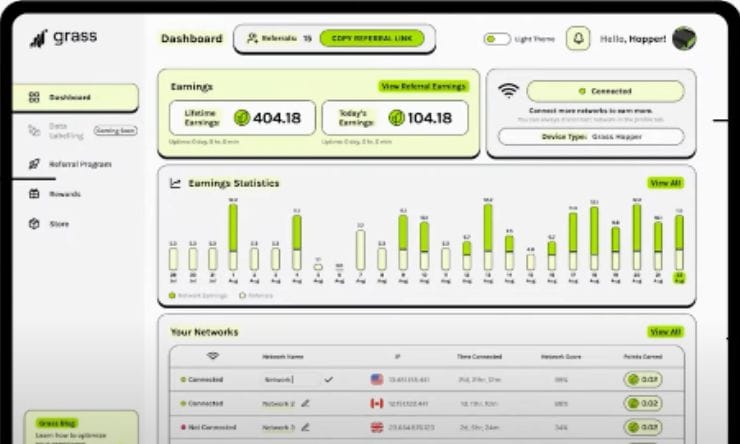Table of Contents
ToggleIntroduction
When you search for something online, have you ever wondered what happens behind the scenes? Every query leads to a carefully curated list of results known as the Search Engine Results Page (SERP). At the heart of this intricate system lies the SERP Table, a powerful tool that can unlock vital insights for your SEO strategy. Understanding how these tables work is crucial if you’re aiming to improve your website’s visibility and drive more traffic.
Navigating through SERP Tables might seem daunting at first, but once you grasp their significance, you’ll find they are invaluable in shaping your online presence. In this post, we will dive deep into what SERP Tables are all about and explore how to leverage them effectively for enhanced SEO success. Whether you’re an experienced marketer or just starting, there’s something here for everyone looking to boost their digital footprint. Let’s get started!
What is a SERP Table?
A SERP Table is a structured representation of the results displayed on a search engine results page. It highlights essential information about each result, such as titles, URLs, and snippets. This table format allows users to quickly assess which links are relevant to their queries.
Each entry in the SERP Table typically includes various elements designed to capture attention. These may consist of featured snippets, local pack listings, or paid ads. The presence of these features can significantly impact click-through rates.
Understanding how different elements populate the SERP Table helps marketers strategize content effectively. By analyzing which formats dominate for specific keywords, you can tailor your approach accordingly.
Mastering the concept of a SERP Table provides clarity on where your website stands among competitors and identifies opportunities for improvement in ranking strategies.
The Importance of SERP Tables for SEO
SERP tables are essential for anyone serious about SEO. They provide a snapshot of what’s happening on search engine results pages. This visibility can guide your strategy.
Understanding SERP tables helps identify which keywords drive traffic. You see not only the top-ranking sites but also their content types and formats, like videos or snippets. This insight informs your content creation.
Moreover, SERP tables reveal competition levels for specific keywords. Knowing where you stand about competitors allows you to adjust your approach effectively.
They also highlight trends over time, showing how rankings fluctuate with algorithm changes or seasonal shifts. Staying informed through these insights means staying ahead of the curve.
By leveraging this information, marketers can optimize their campaigns and improve click-through rates. The data is invaluable for making strategic decisions that lead to better rankings and increased visibility online.
How to Read and Analyze SERP Tables

Reading and analyzing SERP tables can reveal a wealth of information. Start by identifying the search query at the top. This sets the context for everything below.
Next, examine the types of results displayed. You may find organic listings, paid ads, local packs, or featured snippets. Each serves different user intents and offers unique opportunities.
Pay attention to rankings. Note where your site appears compared to competitors. This helps you gauge your position in the market.
Look at meta titles and descriptions as well. These elements influence click-through rates (CTR). Analyze their effectiveness; are they enticing enough?
Consider user engagement metrics if available such as average time on page or bounce rate to understand how visitors interact with those results.
Utilizing SERP Tables in Keyword Research
SERP tables are a treasure trove for keyword research. They provide a snapshot of how keywords perform in search results, revealing valuable insights at a glance.
When analyzing SERP tables, focus on the keywords that competitors rank for. This can guide your content strategy and help you identify gaps in your approach. Look for high-volume keywords with low competition to gain an edge.
Consider the types of content that occupy top positions. Are they blogs, videos, or product pages? This helps shape your content format and approach.
Pay attention to featured snippets and other rich results displayed in SERPs. These elements offer additional opportunities to capture audience attention beyond traditional listings.
Don’t just chase high-ranking keywords blindly; assess their relevance to your target audience. Alignment with user intent is key for effective engagement and conversion rates.
Tips for Improving SEO with SERP Tables
To enhance your SEO strategy using SERP tables, start by identifying high-ranking keywords. Focus on long-tail keywords that align with user intent. These often present lower competition and higher conversion rates.
Next, examine the types of content ranking for those keywords. Are they blogs, videos, or infographics? This insight can guide your content creation efforts to meet audience expectations.
Pay attention to featured snippets in SERP tables. They provide a prime opportunity to capture organic traffic. Aim to create concise answers or summaries that could potentially be pulled as featured content.
Utilize competitor analysis through SERP tables as well. Identify gaps in their strategies where you can excel or fill an unmet need within your niche.
Keep track of changes over time. Regularly updating your keyword research based on evolving search results will help maintain relevance and improve rankings continuously.
Common Mistakes to Avoid with SERP Tables
SERP tables can be incredibly helpful, but many users make common errors that hinder their effectiveness. One frequent mistake is ignoring local search results. If your business has a geographical focus, neglecting localized SERPs means missing out on valuable traffic.
Another pitfall is fixating solely on rankings without considering click-through rates (CTR). High positions are great, yet if users aren’t clicking through to your site, it indicates an issue with either content or meta descriptions.
Additionally, failing to update keyword strategies based on changing SERP layouts can lead you astray. Search engines constantly evolve, so what worked yesterday might not yield the same results today.
Don’t overlook competitor analysis in your SERP table evaluation. Understanding who ranks alongside you provides insights into improving your strategy and staying competitive in your niche. Recognizing these mistakes will sharpen your SEO approach significantly.
Conclusion
Understanding SERP tables is essential for anyone serious about improving their SEO strategy. These tools provide a clear snapshot of how keywords perform in search results and highlight opportunities for ranking improvements. By analyzing the data, you can identify which aspects to focus on, whether it’s optimizing content or enhancing user experience.
Utilizing SERP tables in your keyword research not only aids in selecting high-potential keywords but also helps you understand the competitive landscape. This insight allows you to craft targeted strategies that align with what users are searching for.
As we discussed, avoiding common pitfalls when working with SERP tables is crucial. Misinterpreting data or ignoring local nuances can derail your efforts. Staying informed about best practices will ensure you’re on track toward achieving your SEO goals.
Embracing these insights equips you to navigate the complex world of search engine optimization more effectively. The journey towards mastering SEO through SERP tables may be challenging, but the rewards are certainly worth it as they lead to enhanced visibility and increased traffic over time.




